Bird migration
Steve Portugal explains why and how birds undertake long and perilous migratory journeys

Dr Steve Portugal
Steve studies flight and group living in animals, focusing on environmental challenges and physiological limitations.
Related topics
Why bother migrating?
Migration can involve long and perilous journeys. It is typically driven by the availability of resources such as food, mates, or the accessibility of nest sites. Many birds that we see in the UK during passage and winter periods breed in the far north, where the expansive tundra, boreal forests and taiga provide a comparatively predator-free environment. This is particularly important for ground-nesting birds, which in the UK would have to contend with mammalian predators such as Foxes, Weasels, Rats, Polecats and Hedgehogs. In the far north, predator numbers drop, with Arctic Foxes, Wolverines and the odd Polar Bear being the main mammalian predators of nests. The other great advantage of breeding so far north is the constant daylight. The land of the midnight sun allows for non-stop foraging, which improves the body condition that birds can achieve. This translates into more eggs and healthier babies, so the foraging opportunities presented by constant daylight are a real benefit. Daylight also promotes rapid growth of fresh vegetation, providing ample food for herbivorous birds such as geese, and habitats for insects which in turn provide food for insectivorous birds, like many northerly-breeding waders. Other species come to Britain to breed after wintering in Africa, like the millions of songbirds that are currently preparing to head south. For these birds, Britain offers an improved chance of raising young, as food is plentiful, and competition reduced.
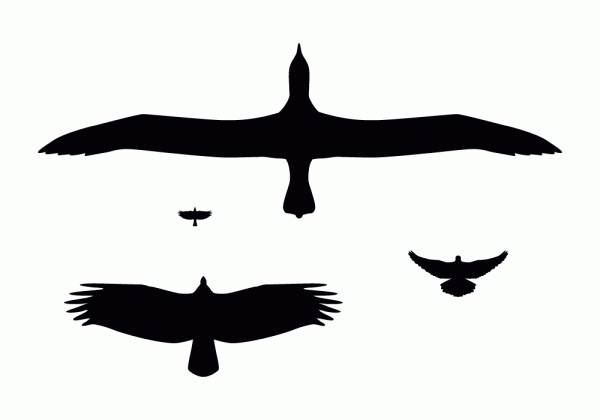
How do you know when it’s time to go?
The arrival and departures dates of birds are often remarkably consistent over years. Birds use a variety of environmental cues to determine when they go. One of the most prominent is day length. The general activity patterns of animals and how they structure their behaviour throughout the day is referred to as their circadian rhythm (‘circa’ meaning around, ‘diem’ meaning day). For most birds (not all, of course), their main periods of activity coincide with daylight, and they rest at night. During darkness, many of the physiological processes of birds, such as heart rate and body temperature, are lowered while specific hormones, for instance melatonin, are released into the bloodstream. In spring, the longer days and shorter nights signal to the birds that it is time to prepare their bodies for migration. During spring, birds are referred to as ‘photo-sensitive’, as they respond to increased daylight hours. In the autumn, birds respond to the shortening daylight hours, to know when it is time to head south. While day length is often the primary driver that determines when the time to move, other factors such as temperature play a role too.
For some species, migrations can involve days of continuous flapping flight, without an opportunity to rest or refuel. To power this tremendous feat of endurance, migratory birds deposit large stores of fat prior to departure. Fat is the most energy dense substrate in the body, and passerines can be composed of up to 50% body fat immediately before their first major migratory flight. During this fattening period, the major flight muscles also undergo vital changes, and key components of the aerobic metabolic pathways for flight are upregulated.
Amazingly, this change to the flight muscles occurs without birds having to increase flight activity – birds don’t train for migrations through increasing exercise; they simply take off one day, ready to go. Fat deposition and energy conservation are vital aspects of the pre-migratory process. To ensure this all goes according to plan, birds use a variety of tactics. One is hyperphagia, where birds significantly increase their food consumption. The other two approaches are related to body temperature; (i) torpor, and (ii) seasonal hypothermia. These both involve the lowering of the core body temperature to save energy and assist with fat deposition. This strategy is a little like turning the thermostat down in your home, so you’re not paying so much to heat the house.
The general activity patterns of animals and how they structure their behaviour throughout the day is referred to as their circadian rhythm (‘circa’ meaning around, ‘diem’ meaning day).
How demanding is migration?
The energetic costs of migration are high, and typically represent the largest sustained period of energy expenditure in the annual cycle. Migrations are generally the highest cause of mortality in both juvenile and adult birds, and this is particularly prevalent in larger, longed-lived, birds. Flight is the most energetically demanding form of locomotion, and during bouts of flight, heart rate can increase by a massive 400%. The fat that was deposited prior to departure is used to fuel this intensive exercise, and while the flight muscles work constantly, birds have a new problem to contend with – overheating. The core body temperature of birds in flight has been recorded as high as 44.4˚C. Overheating causes birds to stop flying, which in turn can be problematic if the terrain is not suitable for landing (e.g. sea crossing), or if birds run into a predator. As such, birds have to make sure they have just the right amount of body fat – not too much to cause excessive overheating, but not too little to run out of fuel at the wrong time. Birds will often exploit favourable wind conditions to minimize the costs of migration, but this can go horribly wrong, as witnessed each year when vagrants from North America or Central Asia arrive on our shores.
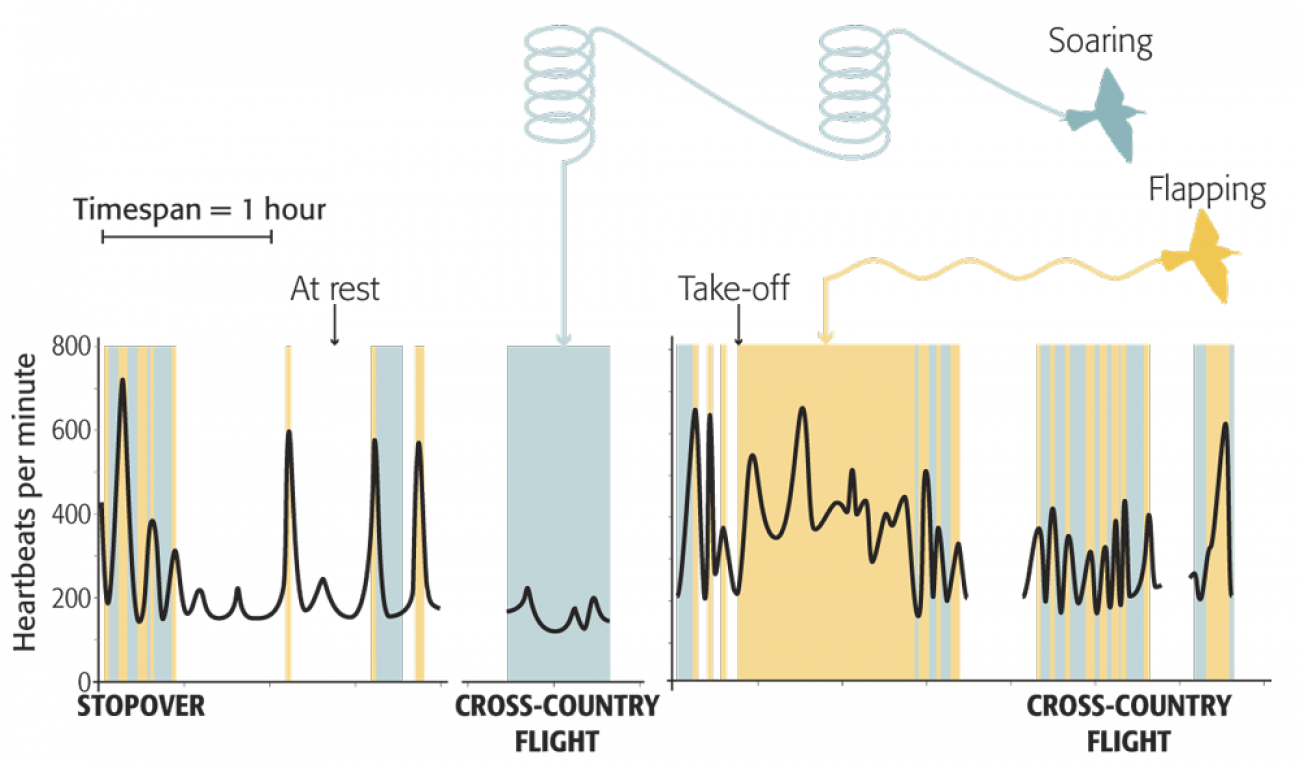
Seabirds
How do you find your way around a featureless environment? That is the task facing seabirds as they migrate over the open ocean. Many seabird species (particularly the tubenoses – albatrosses and shearwaters) use their sense of smell to navigate. Migration can be comparatively low-cost from an energetic perspective, thanks to seabirds’ wing shapes (Fig 1) and flight styles, and a propensity for using winds. Seabirds use two soaring techniques, (i) wind-shear (dynamic) soaring, and (ii) wave-slope soaring (updrafts), allowing them to fly for days, zig-zagging with the wind. For many seabirds, tail winds hold the clue to effortless flying. Heart rate during flight is reduced by 40% in tail winds compared to head winds, and flight speeds are nearly double. To make life even easier, many seabirds have a special skeletal structure that allows them to lock their wings when soaring, and all the bird has to do is steer.
Migrations are generally the highest cause of mortality in both juvenile and adult birds, and this is particularly prevalent in larger, longed-lived, birds.

What determines the migration route?
Birds will always look to optimise their migration routes, to minimise energy expenditure, and to maximise their chances of safely arriving at their destination. For birds with large broad wings, such as storks, vultures and eagles, the energetic cost of flapping flight is high. These birds rely primarily on soaring to get from A to B, using thermals – rising columns of hot air – that enable them to soar over land. Thermals, however, do not form at sea. Large sea crossings, therefore, form a major barrier and these species will always minimise the time spent crossing open water. This causes a funnelling of migration routes around the Mediterranean, with thousands of birds crossing at the narrowest points like the Strait of Gibraltar. For smaller birds, the energetic costs of flapping flight are lower, and the general flight style quite different. For these species, such as orioles, doves and hirundines, migratory routes are more variable, both between and within species. Moreover, many of these birds cross the Mediterranean Sea taking advantage of the many islands to rest and refuel. A bird’s wing morphology and associated flight style strongly dictate the migratory routes that it can take, and how much energy will be expended during flight.
Our understanding of where birds migrate to, and the paths they take, has come a long way since the days when we thought Swallows hibernated at the bottom of lakes. This is primarily due to the large-scale ringing schemes, and more recently, the use of tracking devices. Together they have really lifted the lid on bird migration, which is pivotal as we truly begin to appreciate the importance of migratory flyways for conserving species that inhabit multiple countries throughout their annual cycle.
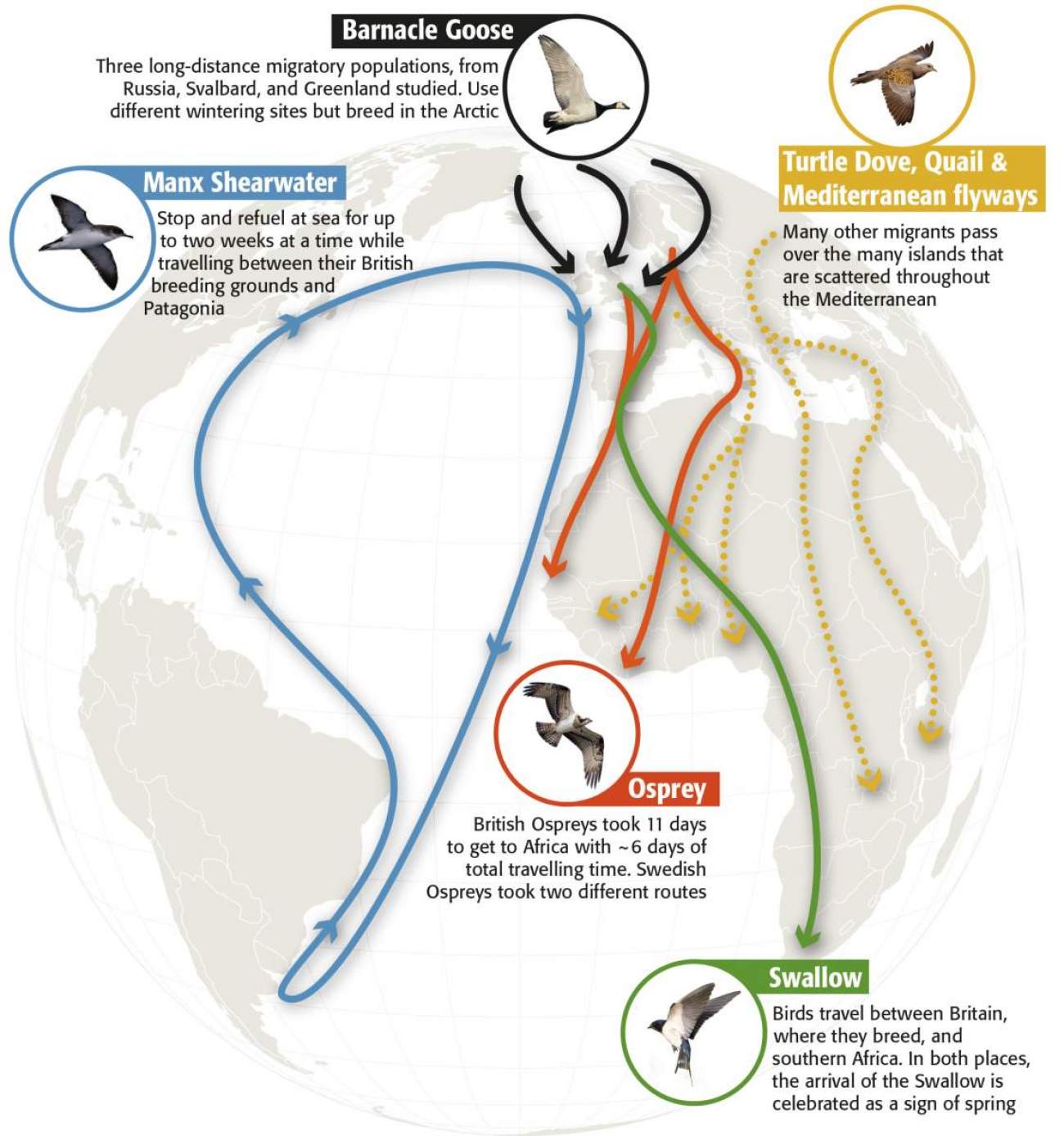
Visit Steve Portugal's website for more information on his research.
Help us to monitor migrant birds
Use BirdTrack to help us monitor bird movements throughout the year.
To witness bird arrival and departure, and the changes to their bodies throughout the year, take part in our Ringing Scheme.
Sponsor our Cuckoos and follow them on their migration.
Take part in a project
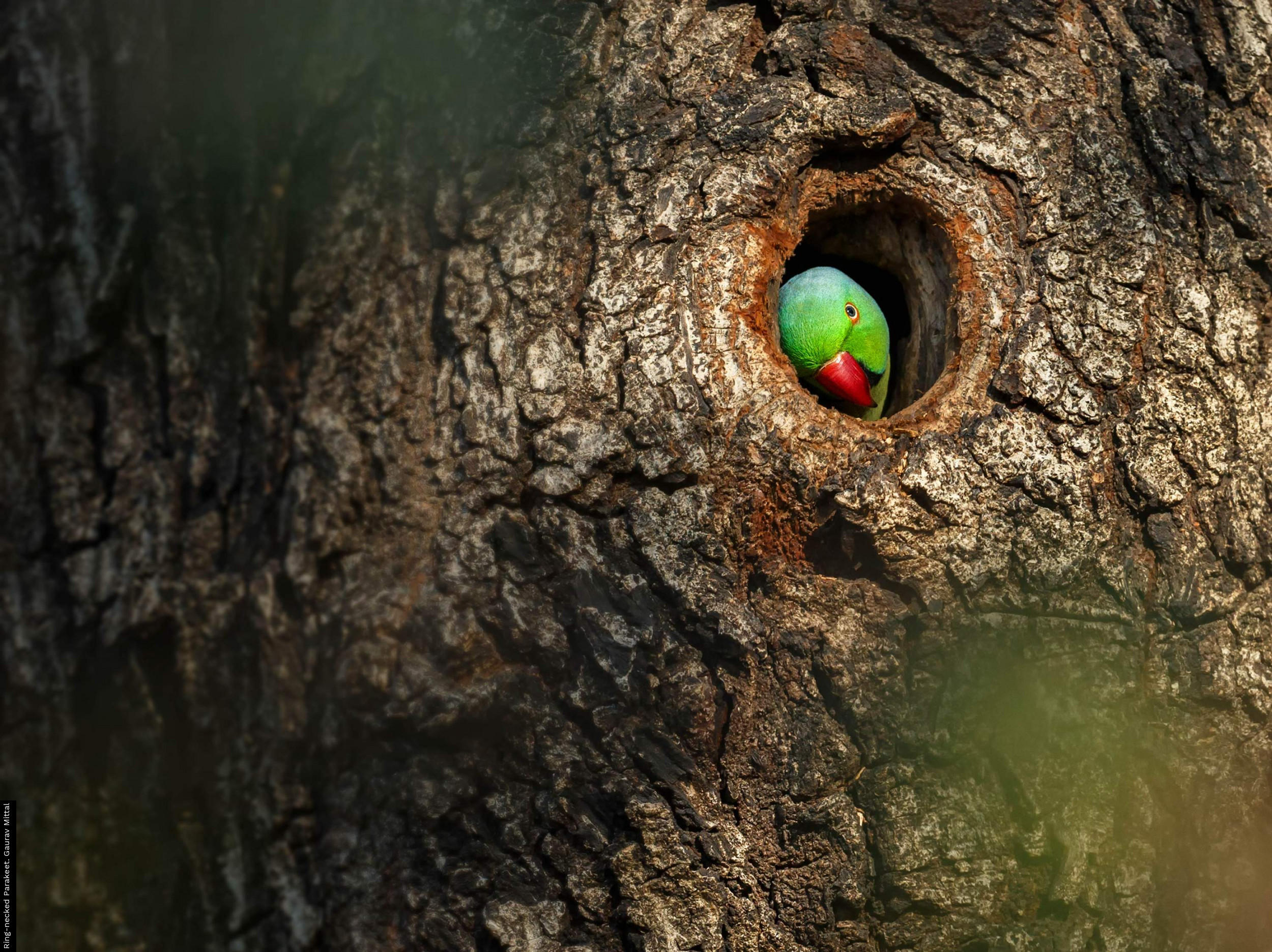



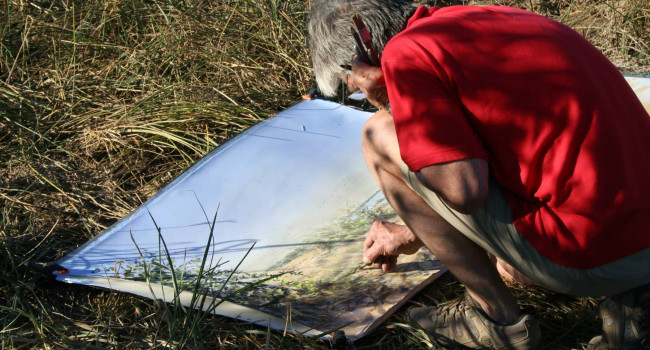

Share this page